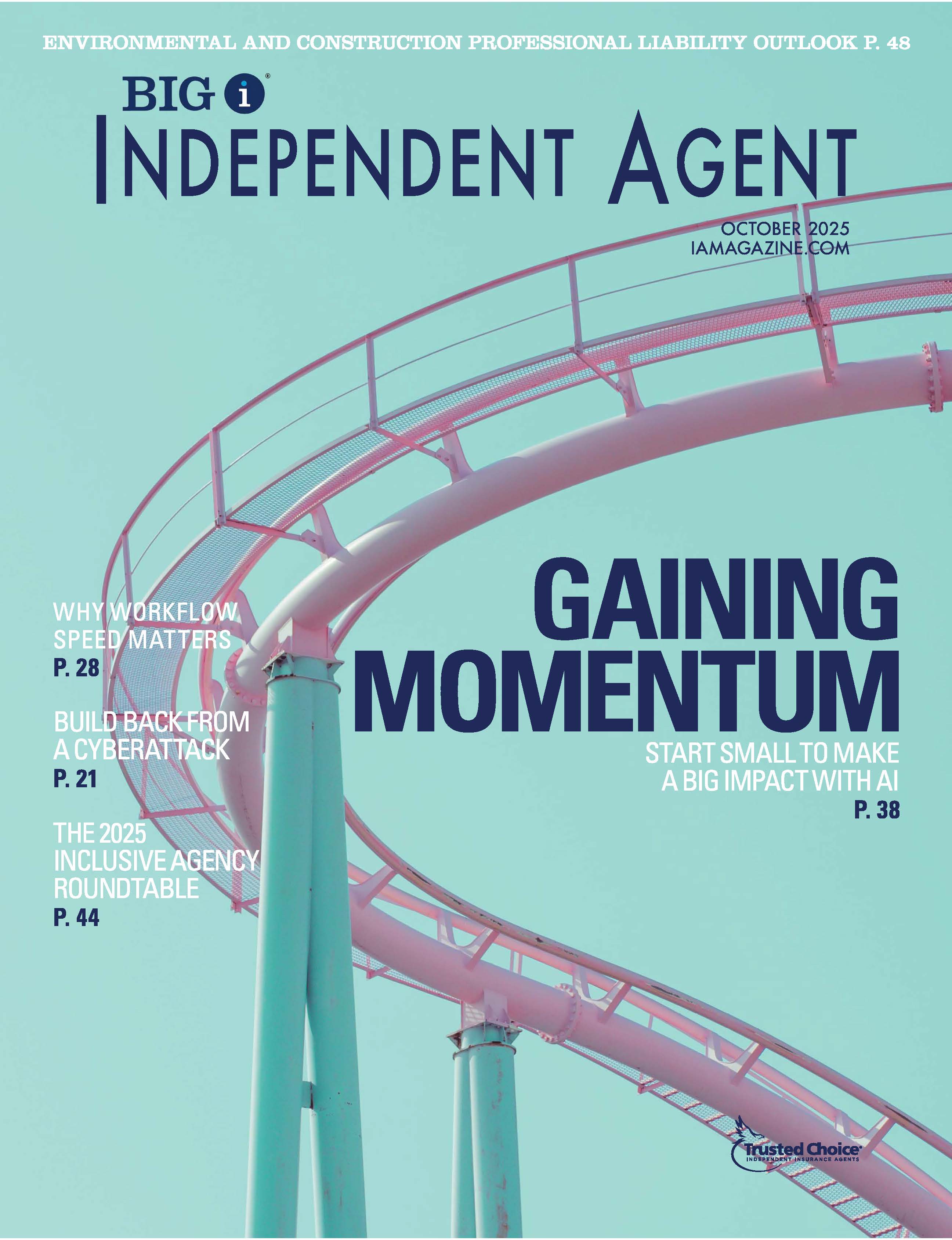Business of Inclusion: 6 Ways to Sell, Market and Network Better

By: Whitnee Dillard & Will Jones
In 2019, millennials—people born between 1981 and 1996—were poised to overtake baby boomers as the largest living generation in the country. Furthermore, Generation Z—people born between 1997 and 2012—are the country’s most racially diverse generation, as well as the best-educated generation yet, according to a Pew Research Center report.
In the past, the U.S. was described as a “melting pot” of cultures. However, as time went by, the term took on less resonance because it suggested that as cultures assimilated into the American way of life, they shed their original identity and everyone became the same. Instead, the term “salad bowl” came to light to incorporate the individuality of every element while also recognizing that each are part of a cohesive being.
As demographics change, businesses that aren’t building bridges or making inroads with new and diverse communities risk being left behind. And if they don’t start soon, they will certainly find it harder to catch up in the future.
Here are six tips for any business looking to start:
In the Washington, D.C. Metropolitan Area, Klinger realized that there were more Chinese restaurants than the number of Burger Kings, Wendy’s, McDonald’s and Chick-fil-As put together. He also found that many other small businesses were Asian-owned, such as nail salons and dry cleaners. “If you look at what businesses are successful, you’ll see some correlations there,” he says. “It’s a quick, easy way for small agencies to build a niche and a name.”
After building a reputation and trust with the Asian community, Klinger expanded through building on centers of influence, educating his clients and referring business. “I’ll start marketing to their accountants, to their lawyers and build relationships,” he says. “I start educating them and giving them value, and then, before you know it, we become an internal leads group where we’re referring each other businesses back and forth.”
Working with a community in this way is a great source of referrals, because by building trust with one minority-owned or immigrant-owned business, it’s likely that they’ll refer you to another, Klinger says. “They all emigrated, and they understand the struggle, so they help each other.”
Also, “it’s a great way to build a profitable book of business, because it’s easier for a CSR or young producer to understand how to underwrite one risk if he becomes specialized in it, versus trying to be a Jack of all trades and a master of none,” he adds.
Lewis moved to the U.S. from Jamaica 41 years ago. After establishing himself in insurance, he was serving on the board of a nonprofit organization and realized that “the majority of the staff were white, yet the people that we were serving were mostly nonwhite,” he says.
The experience forced Lewis to look at the staff at his agency. In doing so, he realized that, like him, the majority of his staff was from the Caribbean. To increase staff diversity he had to be very intentional about changing his approach to recruiting.
“The point here is that naturally, we hang around people who are like ourselves,” he says. “That’s just natural. It’s normal. It’s not that anyone’s trying to leave people out; that’s just the way it happens.”
But for those who are looking to learn more and change, Lewis recommends approaching new groups by “being authentic and saying that this is new for you, you don’t know a lot, but you’re trying to learn,” he says. “Being vulnerable is authentic because you’re sharing that you haven’t done well in an area and you’re not afraid to share your mistake as you rectify the situation.”
The beauty of embracing diversity is that “we’re richer for it, we gain more perspective, we become more educated, we learn a different way and we enrich our lives as we do it,” he adds. “Don’t we all want that?”
3) Adapt to relieve pain points. Consumers naturally gravitate to the businesses that are easiest to do business with. However, everyone has different problems that they’re trying to solve, and everybody has their definition of what ease of doing business feels like.
“Different people want different things, but you can start by paying attention to some of the things that you see shifting in your community and then educating yourself about it,” says Kelly McDonald, president of McDonald Marketing and a professional speaker. “It’s about modifying your business to relieve pain and making sure that whatever people want, you’re there giving it to them.”
Giving customers what they want could be anything: from extending or modifying hours to having an app or providing each customer with the option for how they would like to be contacted by their agent. For McDonald, one real-life example stands out about a captive agent who decided to go out on his own.
The agent, “a white guy who speaks fluent Spanish because he was raised in Mexico for the first 14 years of his life,” decides to open an agency in one of the fastest-growing Hispanic communities in the U.S. because “he was uniquely situated to serve that community in their language of choice,” explains McDonald.
After opening the office and marketing in Spanish, the agent realized he’d made a few critical mistakes: The plush carpeted office and wooden mahogany desk did not suit his clientele, and his opening hours were all wrong. “This agent realized very quickly that his customers, almost all of whom worked in construction, were coming to his office straight from a job site,” McDonald says. “They were covered with dirt, and they did not want to sit on his nice chairs or walk on his nice carpet. They were visibly uncomfortable in his nice office.” Moreover, his 9 a.m. to 5:30 p.m. office hours did not suit contractors who often work as long as there’s daylight. So the agent adapted.
“Within two weeks, he ripped out the carpeting and replaced it with tile flooring that could be easily swept and mopped. He got rid of his fancy desk and replaced it with something metal and utilitarian, and once a week he stayed open until 10 p.m. and opened on Sunday afternoons,” McDonald says.
America is definitely “more open” than it was when Lewis first moved to the U.S., but “we still have room to go,” he says. “There is still that concept of what they call toleration—where we are all aware of one another, and we’re OK with one another, but we’re still completely separate, which is truer in some areas more than others.”
Being self-aware of unconscious bias is another steppingstone toward building bridges between communities and businesses. “We cannot assume that we don’t have some prejudice, that we are being intentional or aren’t being judgmental or exclusive,” Lewis says. “We have people of color who don’t realize that they can do the same thing.”
Meanwhile, Klinger warns of other assumptions. “Don’t assume that someone won’t speak to you because you’re white or because you don’t speak their language,” he says. “I’ve met many minorities that don’t want to do business with someone from their own culture because they don’t trust them.”
Also, “don’t assume that just because you hired one employee [from a certain cultural background], that employee is going to be able to build your niche for you,” Klinger says. “It takes time to train that employee to get them to become insurance smart and understand a good risk.”
However, “the ways that marketers typically segment people are not accurate descriptors of who they truly are,” explains Marcus Collins, lecturer of marketing at the University of Michigan Ross School of Business. “Everyone in this world is different. We are all unique. But marketers segment and put them in homogeneous clusters where people are more alike than they are different.”
Meanwhile, as businesses try to be inclusive, “inclusivity in marketing and messaging is a misnomer,” Collins continues. “The idea is not to communicate with everyone. Instead, it’s about communicating with the people who are most inclined to buy.”
For example, take millennials. These are the people who happen be have been born in a certain timeframe. But just because they were born in a certain timeframe, it doesn’t mean that they’re alike. Instead of using blanket, demographic assumptions about groups, Collins recommends digging into the data to target potential buyers.
“There’s tons of data available about people,” he says. Google Trends provides the searches that people have made “so you can get a sense of what people are looking for and their intentions.” Another is Twitter’s advanced search, which allows you to filter tweets by date, location and keyword. “The only things they require are time and curiosity,” Collins adds.
6) Seek expertise. In 2019, fashion designer Dior made the headlines over the usage of Native American imagery for their new “Sauvage” perfume, a word that was used as a slur against Native Americans. The main accusation against Dior was on the grounds of cultural appropriation, which is defined as the adoption of elements of one culture by members of another culture and is controversial when members of a dominant culture appropriate from disadvantaged minority cultures.
While there are many pitfalls to avoid when communicating across cultures, the best thing companies can do is seek expertise and build relationships. “If you’re not knowledgeable about a particular community, don’t hesitate to bring expertise into your organization,” says Reginald J. Miller, vice president of global inclusion & diversity at VF, an apparel company that owns more than 30 brands including Timberland, The North Face and Vans.
Expertise is important to ensure that business owners “don’t make a mistake that could potentially ruin the opportunity to expand into a new client base while also ruining the goodwill that businesses have built up in their community,” Miller says.
Additionally, to connect with new or different groups, relationship building is a key component “to understand those groups, the key influencers and the most powerful organizations within that demographic,” Miller says. “It also builds credibility.”
Building relationships and credibility means showing up. “Let’s say you’re trying to recruit from a historically black college or university. One of the worst things you could do is show up one semester, and then you’re gone the next. Then you show up two years from now, and then you’re gone two years after that,” Miller says. “Whether we’re talking about recruiting or consumers, that yo-yo effect doesn’t build trust, doesn’t build credibility and doesn’t build authenticity.”
“This is not an ‘I’ll get to it later concept,’” Miller says. “It’s about building credibility with these audiences now—that’s going to be the difference between the companies that are around in 2030 or 2040 versus the companies who are not going to be here.”
“You can’t wait for the demographic to change and say, ‘OK, now I’m going to engage with this community.’ It’ll be too late. They’re going to go with the companies and the businesses that they trust,” he adds. “You need to sow the seeds now, plant the roots now, so as the country continues to change, you already have a foundation in these communities.”
Whitnee Dillard is Big “I” director, diversity & inclusion; Will Jones is IA managing editor. Learn more about Big “I” Diversity initiatives online.










